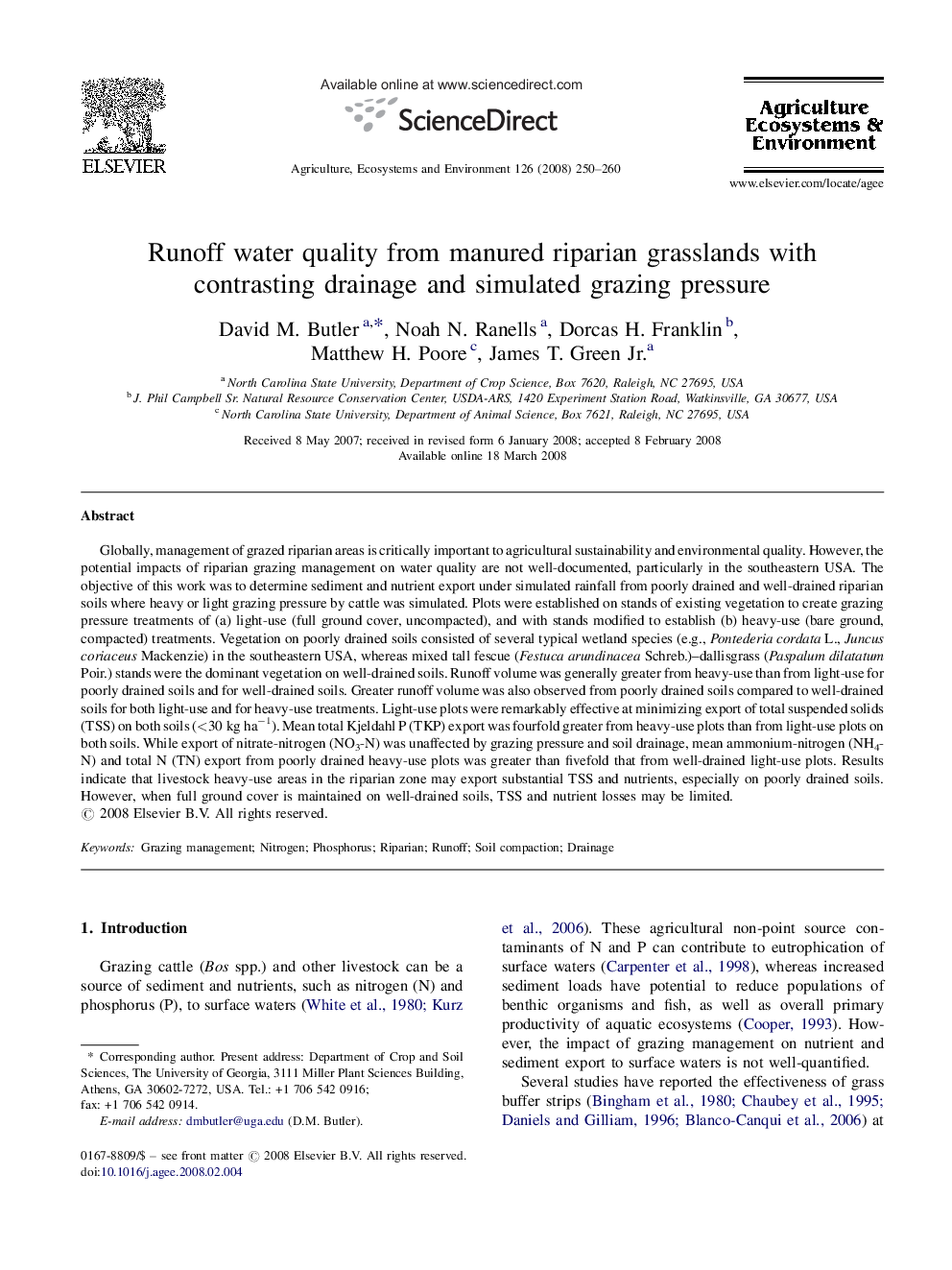| Article ID | Journal | Published Year | Pages | File Type |
|---|---|---|---|---|
| 2415518 | Agriculture, Ecosystems & Environment | 2008 | 11 Pages |
Globally, management of grazed riparian areas is critically important to agricultural sustainability and environmental quality. However, the potential impacts of riparian grazing management on water quality are not well-documented, particularly in the southeastern USA. The objective of this work was to determine sediment and nutrient export under simulated rainfall from poorly drained and well-drained riparian soils where heavy or light grazing pressure by cattle was simulated. Plots were established on stands of existing vegetation to create grazing pressure treatments of (a) light-use (full ground cover, uncompacted), and with stands modified to establish (b) heavy-use (bare ground, compacted) treatments. Vegetation on poorly drained soils consisted of several typical wetland species (e.g., Pontederia cordata L., Juncus coriaceus Mackenzie) in the southeastern USA, whereas mixed tall fescue (Festuca arundinacea Schreb.)–dallisgrass (Paspalum dilatatum Poir.) stands were the dominant vegetation on well-drained soils. Runoff volume was generally greater from heavy-use than from light-use for poorly drained soils and for well-drained soils. Greater runoff volume was also observed from poorly drained soils compared to well-drained soils for both light-use and for heavy-use treatments. Light-use plots were remarkably effective at minimizing export of total suspended solids (TSS) on both soils (<30 kg ha−1). Mean total Kjeldahl P (TKP) export was fourfold greater from heavy-use plots than from light-use plots on both soils. While export of nitrate-nitrogen (NO3-N) was unaffected by grazing pressure and soil drainage, mean ammonium-nitrogen (NH4-N) and total N (TN) export from poorly drained heavy-use plots was greater than fivefold that from well-drained light-use plots. Results indicate that livestock heavy-use areas in the riparian zone may export substantial TSS and nutrients, especially on poorly drained soils. However, when full ground cover is maintained on well-drained soils, TSS and nutrient losses may be limited.
